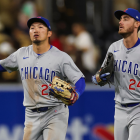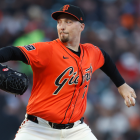CLEVELAND -- There are no more than two baseball games left in the 2016 season. The Cleveland Indians and Chicago Cubs will play Game 6 of the World Series at Progressive Field on Tuesday night. The Indians lead the series 3-2. Here's how you can watch Game 6.
Despite winning 94 games during the regular season, the Indians have been an underdog throughout the postseason, thanks mostly to injuries. They've been without Michael Brantley (shoulder) and Carlos Carrasco (hand) this postseason, and they only recently welcomed Danny Salazar (forearm) back as a reliever.
And yet, Cleveland is one win away from its first World Series championship since 1948. The Indians get the opportunity to win it at home too, where they play much better. The NBA's Cleveland Cavaliers ended the city's long title drought earlier this year. The Indians now have a chance to make it two championships within a few months.
Here's the blueprint the Indians should follow to clinch the World Series championship in Game 6. (Matt Snyder has the blueprint for the Cubs.)
Best lineup
- 3B Jose Ramirez
- 2B Jason Kipnis
- SS Francisco Lindor
- DH Carlos Santana
- 1B Mike Napoli
- RF Lonnie Chisenhall
- LF Coco Crisp
- CF Tyler Naquin
- C Roberto Perez
Yes, that is different than the lineup the Indians have been using against right-handed pitchers throughout the postseason. Manager Terry Francona has been batting Santana leadoff, Napoli fourth and Ramirez fifth. The Indians lack a true leadoff man, so Francona has put Santana, his best on-base player (.366 OBP in 2016), atop the lineup instead.
It has worked so far. I mean, the Indians are one win away from winning a championship and they did score the second-most runs in the AL during the regular season. It's hard to complain about Francona's lineup construction to date. I just don't love Santana leading off because it marginalizes his power. The guy hit 34 homers during the regular season, and he went deep in Game 4 at Wrigley Field.
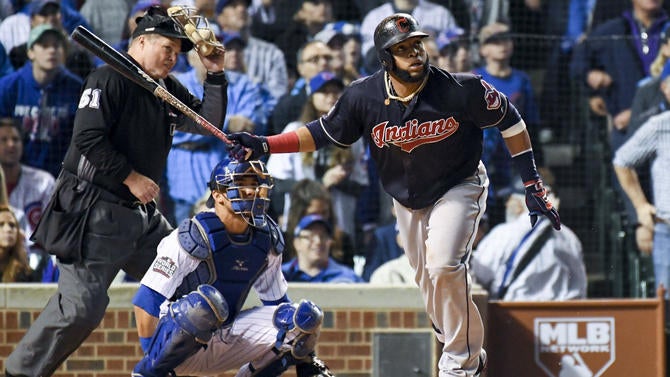
Ideally, you want runners on base when Santana comes to the plate, and Kipnis and Lindor have a much greater chance of reaching base than Naquin and Perez. Ramirez is a good on-base player himself (.363 OBP) but he doesn't have Santana's power, which is why I have him leading off instead. Sliding Santana down gives the Indians a little more thump in the middle of the lineup.
Otherwise the rest of the lineup really just falls into place. There's left-right balance -- there are no two right-handed or left-handed hitters hitting back-to-back, which creates matchup headaches for the Cubs -- and also four switch-hitters (Ramirez, Lindor, Santana, Crisp). That's huge. The Indians had the platoon advantage in 71 percent of their plate appearances during the regular season, second most in baseball behind the Yankees (73 percent), and those switch-hitters are why.
Pitching plan
Curveballs. Curveballs, curveballs, then some more curveballs. The Indians have allowed only 25 runs in 13 games this postseason by burying opposing hitters with breaking balls. It's probably not a strategy that can work during the regular season because breaking balls are tough on the arm, but, in the postseason with everything on the line, the Indians have thrown benders a ton.
Josh Tomlin, Cleveland's Game 6 starter, has thrown plenty of curveballs throughout the postseason and that strategy served him well in Game 3. There's no reason not to continue it. See if the Cubs adjust, and if they do, then go to the cutter and sinker. The Cubs were one of the worst hitting teams against curveballs this year, ranking 29th in batting average (.178) and 24th in slugging percentage (.315) against the pitch during the regular season, so use it and use it often.
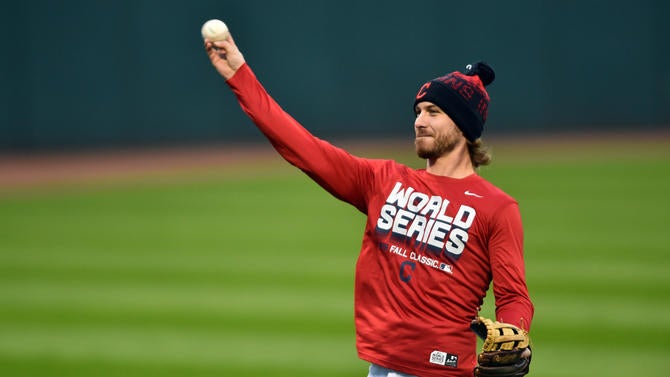
Either way, Tomlin's leash should be short because he's on three days' rest and also because he performs worse the third time through the lineup. Most pitchers do, really, and Tomlin is no exception. Francona had a quick hook in Game 3 -- Tomlin was lifted after 58 pitches and 4 2/3 innings despite allowing zero runs -- and I expect that will again be the case in Game 6.
Beyond Tomlin, the plan is pretty simple. Get a lead, hand the ball to Andrew Miller and Cody Allen, and let them do the rest. Bryan Shaw is the No. 3 guy in the bullpen should one be needed. Miller has had the past two days off, so he should be good for two innings in Game 6. Maybe even 2 1/3 or 2 2/3 if they're leading.
If anyone other than Tomlin, Shaw, Miller or Allen pitches Tuesday, something probably went wrong for the Indians.
Offensive plan
As good as he has been, Jake Arrieta has not been quite as dominant this season as last season. His command in particular seems to come and go. It should be evident early in Game 6 whether he's locating well or not. Needless to say, being able to work ahead in the count is a big advantage.
Hitters vs. Arrieta after first pitch strike: .147/.203/.226
Hitters vs. Arrieta after first pitch ball: .225/.358/.365
If Arrieta is not throwing strikes, the Indians should be patient and let him work himself into trouble. He'll do it. He did it a bunch of times during the regular season. If he is throwing strikes though, the best plan is to be aggressive and hunt fastballs early in the count. Letting Arrieta get ahead in the count is asking for trouble. Look for something hittable early in the count and attack.
Also, you can run on Arrieta. He allowed 23 steals in 26 attempts during the regular season -- it was 27 steals in 33 attempts last year, so this isn't a one-year blip -- so pressure on the bases is a must. The Indians are a very aggressive base-running team and that goes beyond stealing bases. They go first-to-third well, advance on wild pitches, the works. It's in their DNA to push the envelope and that'll be necessary against Arrieta, especially if he's on.
The Indians don't have to do anything out of the ordinary against Arrieta. They're a good offensive team capable of hitting for average, working walks, hitting for power and creating havoc on the bases. That's their formula and it should be no different in Game 6. Once you start trying to change what has worked for you all year, things can spiral out of control. Be yourself!
How to use bench
The Indians are carrying a four-man bench in the World Series. Brandon Guyer is their best reserve bat and he's the designated lefty masher, so look for him to pinch-hit in the middle or late innings against whatever southpaw Joe Maddon runs out there -- Travis Wood, Mike Montgomery, Aroldis Chapman, whoever.
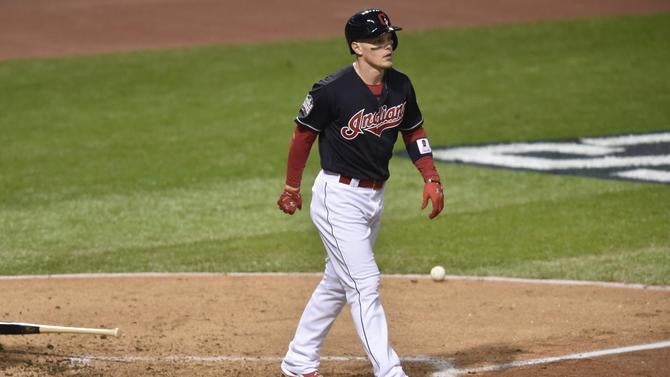
Ideally Guyer would pinch-hit for Crisp or Naquin so it can be a straight-up outfielder-for-outfielder substitution, but I don't think Francona should hesitate to use him in place of Perez either. Perez has had a nice postseason, but he's not much of a hitter in general, and if there are ducks on the pond against a lefty, Guyer is Francona's best option.
Rajai Davis is another right-handed hitting reserve outfielder and he's a speed guy. Francona could use him to pinch-run in big spots. He's more of a pinch-runner than a pinch-hitter, but he could hit against a lefty too, if necessary. Utility man Michael Martinez and catcher Yan Gomes are defensive specialists. Davis and Martinez have been replacing Crisp and Naquin for defense in the late innings and that should continue.
Outside of pinch-hitting Guyer against a lefty and using Davis as a pinch-runner, the Indians don't pack a ton of offense on their bench. Cleveland is a team that leans heavily on its starting players, and since it's now in the AL park with the DH, it doesn't figure to need its bench as much as it did in Games 3-5.

















